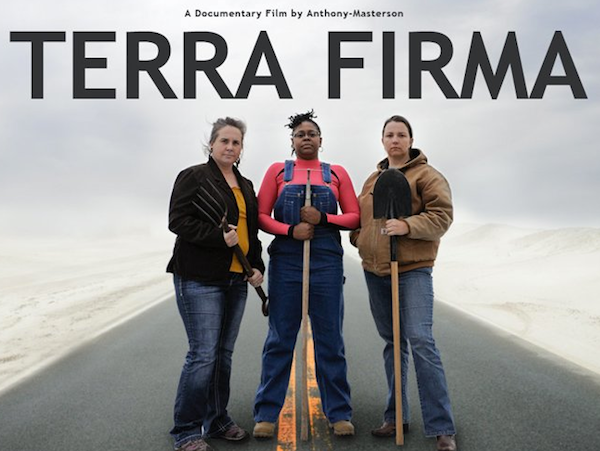

51. The Food Chain Worker Alliance and Restaurant Opportunities Centers United work on improving workers’ wages through a list of policy recommendations, including indexing federal wages for tipped employees.
52. American Heritage Livestock Conservancy ensures the health and biosecurity of heritage and traditional livestock and poultry breeds.
53. AVRDC- The World Vegetable Center improves crop varieties and production methods in developing countries. Their two improved tomato varieties are at the heart of increasing harvests, production and processing in East Africa, which in turn, raises incomes and creates jobs.
54. New farmers’ organizations that match young farmers with seasoned mentors are growing in popularity, such as Iowa State’s volunteer mentor program and the National Farmers Union’s Beginning Farmer Institute.
55. The Rainforest Alliance now provides grade-specific curriculum to educate young people about biodiversity conservation in the world’s rainforests.
56. In Vermont, according to Brattleboro’s Equitable Buying Club, food sharing programs make local food more accessible to hungry populations.
57. The Barilla Center for Food & Nutrition’s Double Pyramid allows eaters to compare the nutritional aspects of food along with their environmental impact.
58. In California and Iowa, sisters Ruth and Shauna Rabinowitz manage their family’s farm using conservation agriculture methods. They represent a model of women, operating a business while also incorporating environmental stewardship including no till, prairie strips and timber management.
59. Eaters can now screen the film Terra Firma, a story of three female veterans with post traumatic stress disorder, who found healing through farm life.
60. FarmNet, in New York, provides prevention and crisis assistance measures for farmers facing mental health issues, such as depression. They offer free, confidential consulting services and operate a hotline for farmers in distress.
61. Slow Food Cycle Sunday in Pemberton, British Columbia, is an annual bicycle tour of regional farms, connecting “town folk and city folk, consumers with their food and people with the land.” In 2013, the tour had more than 4,000 participants.
62. Chefs and farmers are forging new partnerships to bring local, quality food to consumers. Food Shed in California, Noma in Denmark, and Bondir in Massachusetts are among many of these farm-to-table restaurants.
63. National Geographic investigates the Future of Food in an eight-month series about strategies to feed a growing population “without overwhelming the planet.”
64. Restaurant Opportunities Centers United’s 2014 Diners Guide to Ethical Eating highlights the employee standards of the most popular restaurants in America and encourages consumers to engage with restaurant management about raising the minimum service wage.
65. This April 2014 the International Institute for Environment and Development in London held a seminar to discuss how providing energy services to smallholder farmers in developing areas could help to increase food security.
66. Australian Women in Agriculture has created a network connecting women in the agricultural industry to each other and to useful resources.
67. Poor children in the U.S. are especially vulnerable to issues of hunger and malnutrition when school is not in session. Fortunately, programs like the Summer Food Service Program provide kids with school lunch programs during summer vacation.
68. Thanks to the USDA’s Food and Nutrition Service, it’s now easier for consumers to use SNAP benefits at their local farmer’s market.
69. Sustainable breweries like Full Sail Brewing Co. in Oregon filter out brewing wastes to feed to livestock who wind up on plates at their brewery pub.
70. Share-a-Share programs in Nebraska provide underprivileged families with community supported agriculture scholarships, giving them the opportunity to eat locally-grown produce throughout the year.
71. Brooklyn’s Food Book Fair brings well-known authors, chefs, publishers and designers together to discuss hot food topics.
72. Chef and food justice activist, Bryant Terry’s, fourth book, Afro-Vegan: Farm Fresh African, Caribbean and Southern Food Remixed defines good food as being an everyday right, not just a privilege.
73. Nineteen-year-old author, Emily Abrams, inspires young adults to embrace climate activism through food consciousness. Her book, Don’t Cook the Planet, has tips for eaters about how to reduce carbon footprints while eating more sustainably.
74. Two state prisons, in California and New York, will begin farm-to-table programs that hire inmates to grow food on site.
75. Panera Bread’s new food policy proposes to eliminate artificial ingredients in its 1,800 locations by 2016.
76. Region-specific food labels, like ASAP’s Appalachian Grown, now allow consumers in Western North Carolina and the Southern Appalachian Mountains to identify foods that are grown locally and organically.
77. The Missouri Botanical Gardens Herbarium Collection of plant species just discovered a new type of flower, bringing their collection to 6.5 million specimens.
78. Tristram Stuart’s organization, Feeding the 5,000, will highlight the importance of eating ugly vegetables and food that otherwise would have been wasted at an event in Nairobi later this year.
79. Palau, a small Pacific island country, may decide to ban fishing vessels from it entire Exclusive Economic Zone, in an effort to improve the sustainability of tuna populations.
80. A new app called PareUp helps to minimize food waste by providing restaurants and food shops with a forum to announce when they have excess food and, rather than throw it away, offer the food to app users at a discounted price.

 233k
233k  41k
41k  Subscribe
Subscribe 
